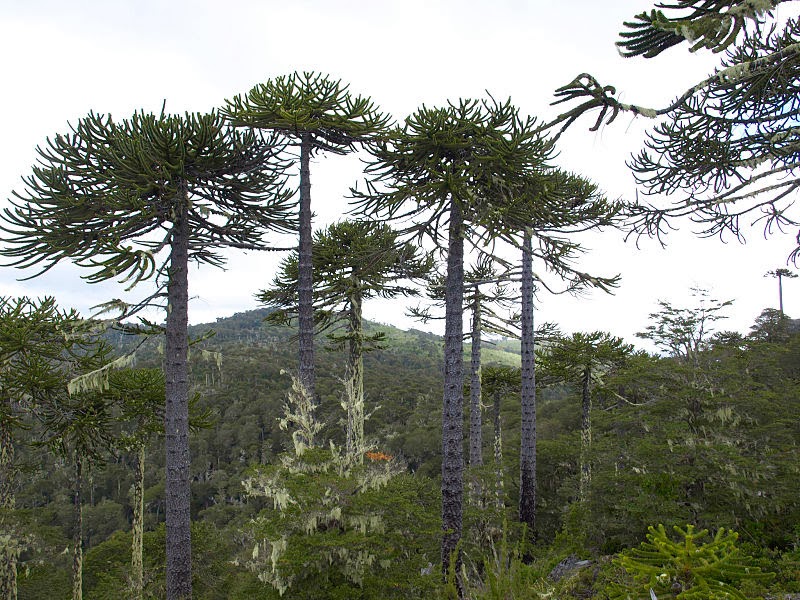Araucaria araucana is a large evergreen tree native to the Andes of Chile. They grow tall, with straight trunks, and live a long time; many are more than a thousand years old, the oldest more than two thousand.
Their range has always been limited to certain areas of sloping volcanic soil, and has been shrinking; they are considered threatened. (In the wild, anyway; these days they also grow in gardens worldwide.) They are sometimes described as "living fossils" because similar-looking leaves are found in fossils as much as 220 million years old; 190 million years ago trees of this family were dominant throughout the southern hemisphere. The monkey puzzle is the only survivor of this once great lineage.
Their leaves make fascinating patterns. The English name seems to derive from a nineteenth-century notion that the spiky leaves and interweaving patterns would have created a great puzzle for any monkeys who tried to climb them.
The female cones grow on the end of the branches and contain large, protein-rich seeds. These seeds are the staple food of the Pehuenche people, whose name means the People of the Monkey Puzzle Tree. This tribe of about 5000 reveres the tree as their spiritual mother and consider it a great sacrilege to harm one.
The trees have fascinating bark. Up to 7 inches thick (18 cm), it protects the trees from fire and cold temperatures.
Thanks to the efforts of the Pehuenche and environmentalists, the remaining stands of these wonderful trees are mostly protected from logging. May they long endure.
Monday, January 13, 2014
Subscribe to:
Post Comments (Atom)











No comments:
Post a Comment